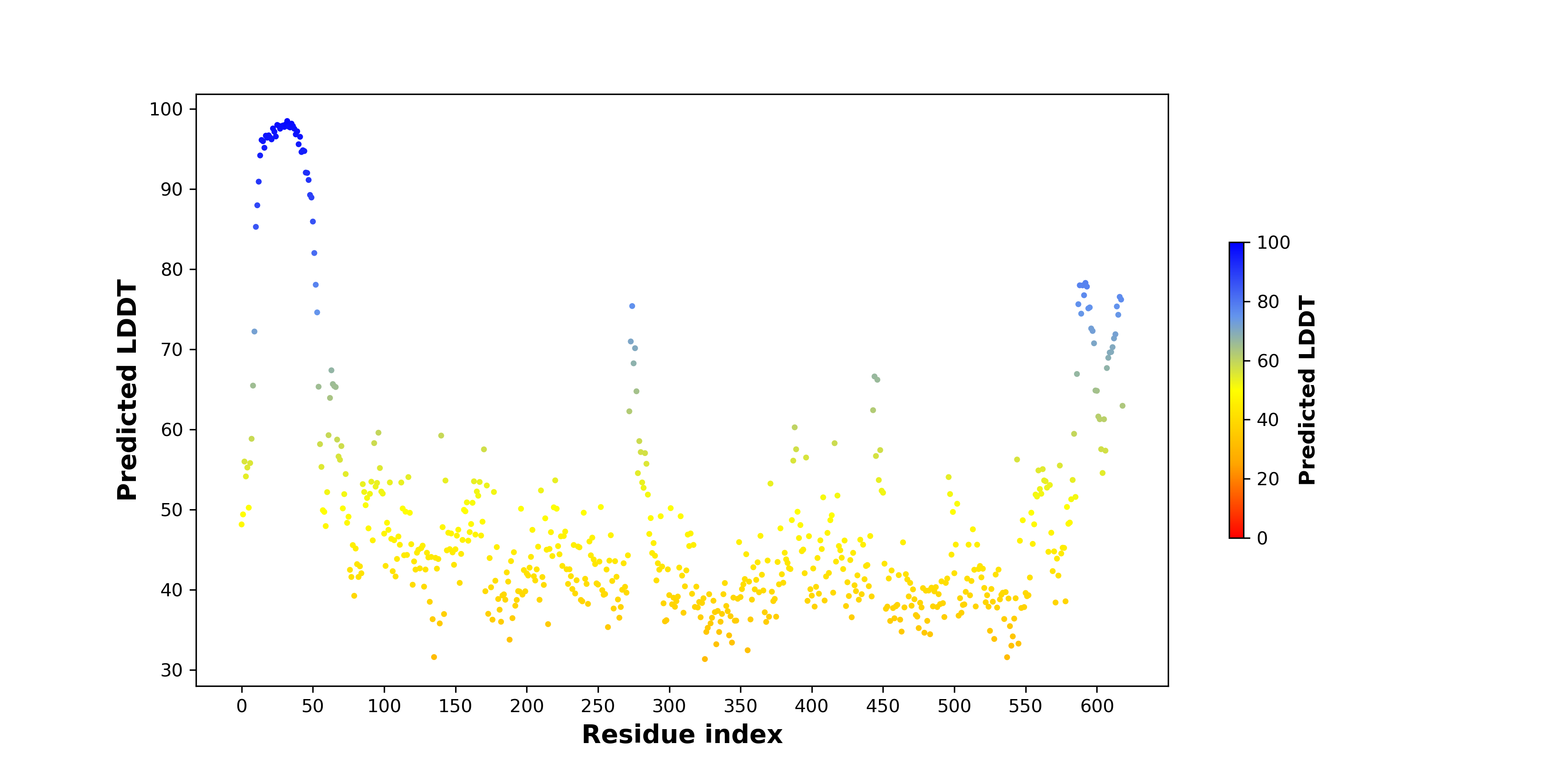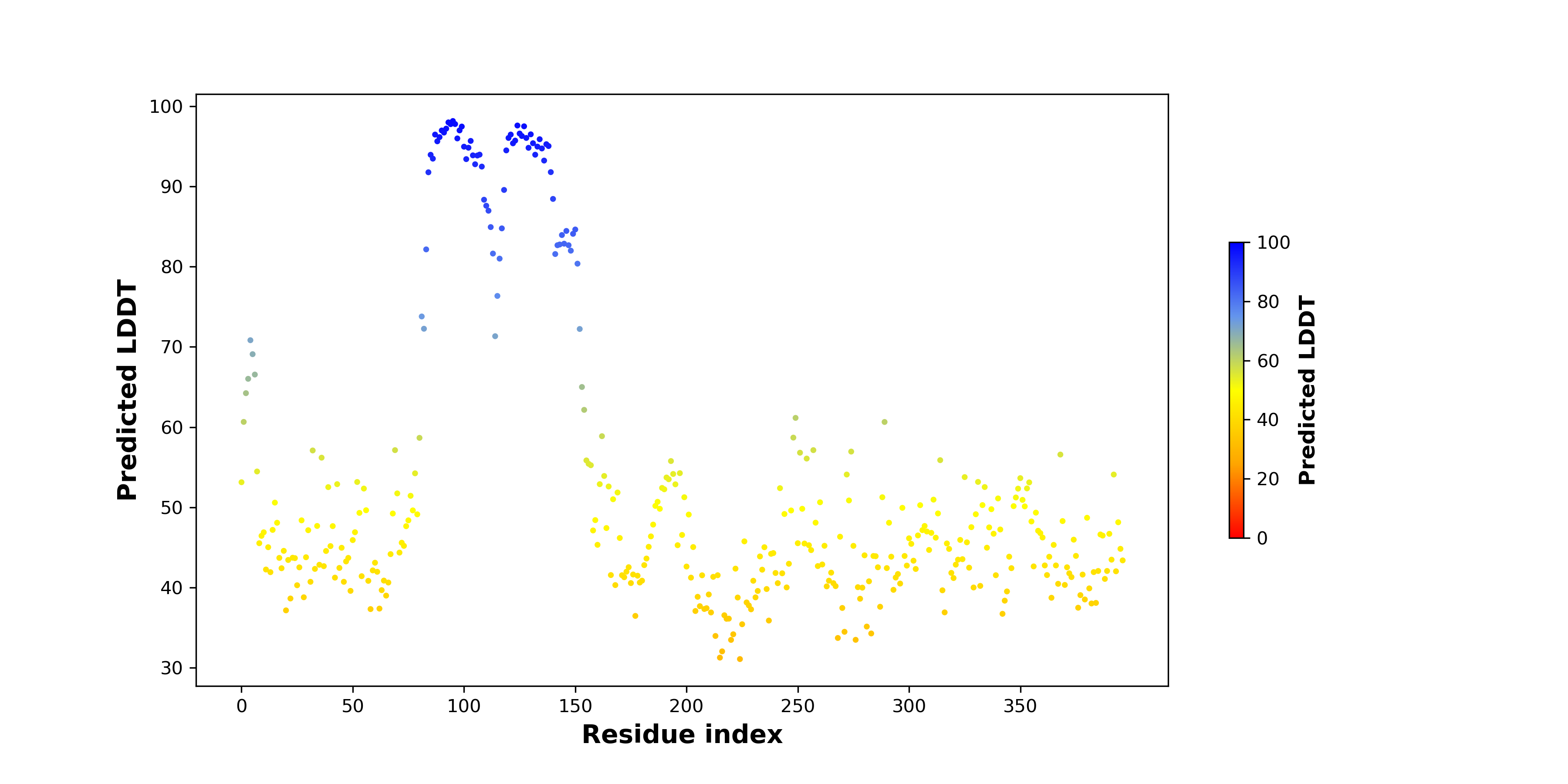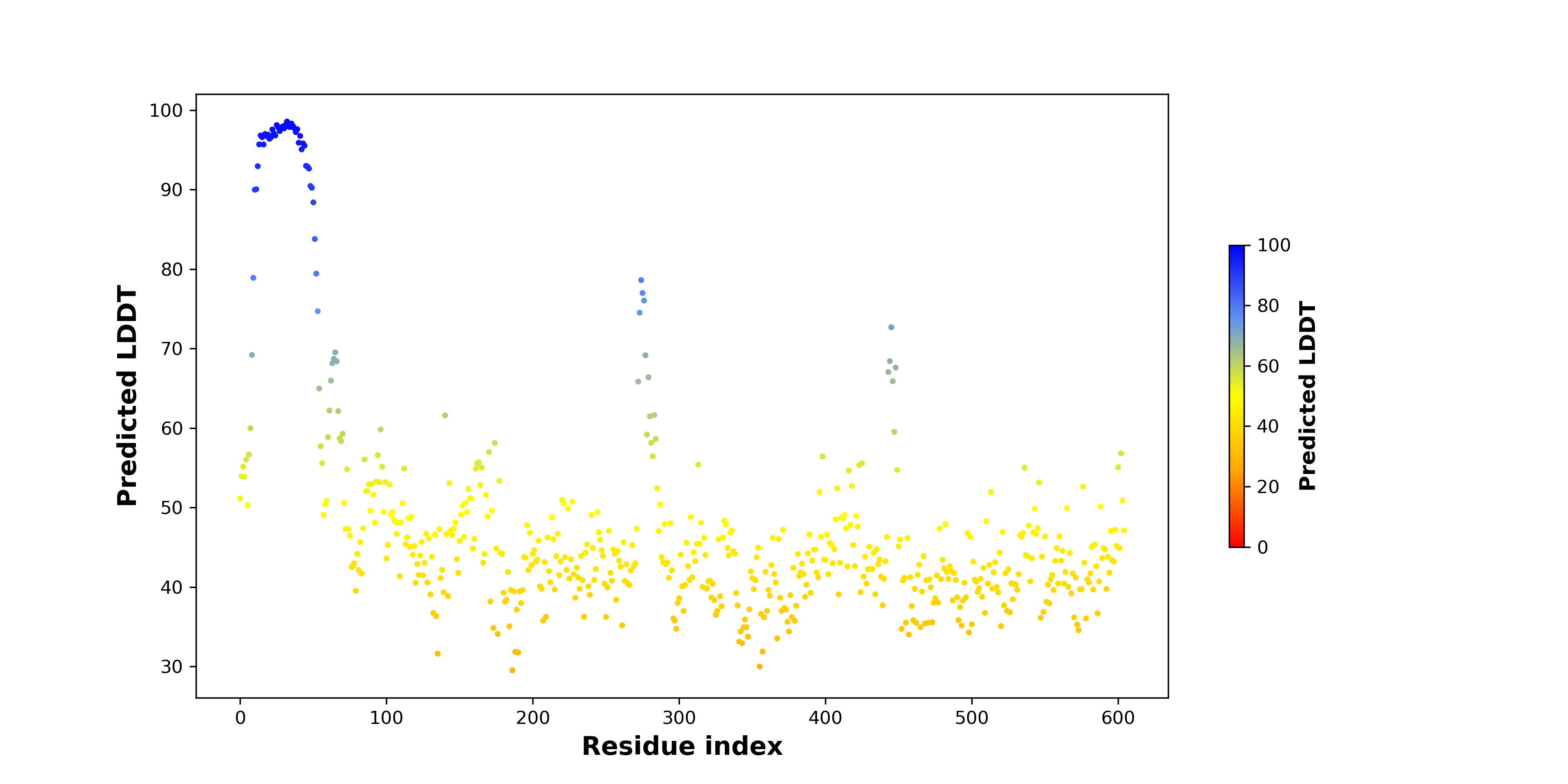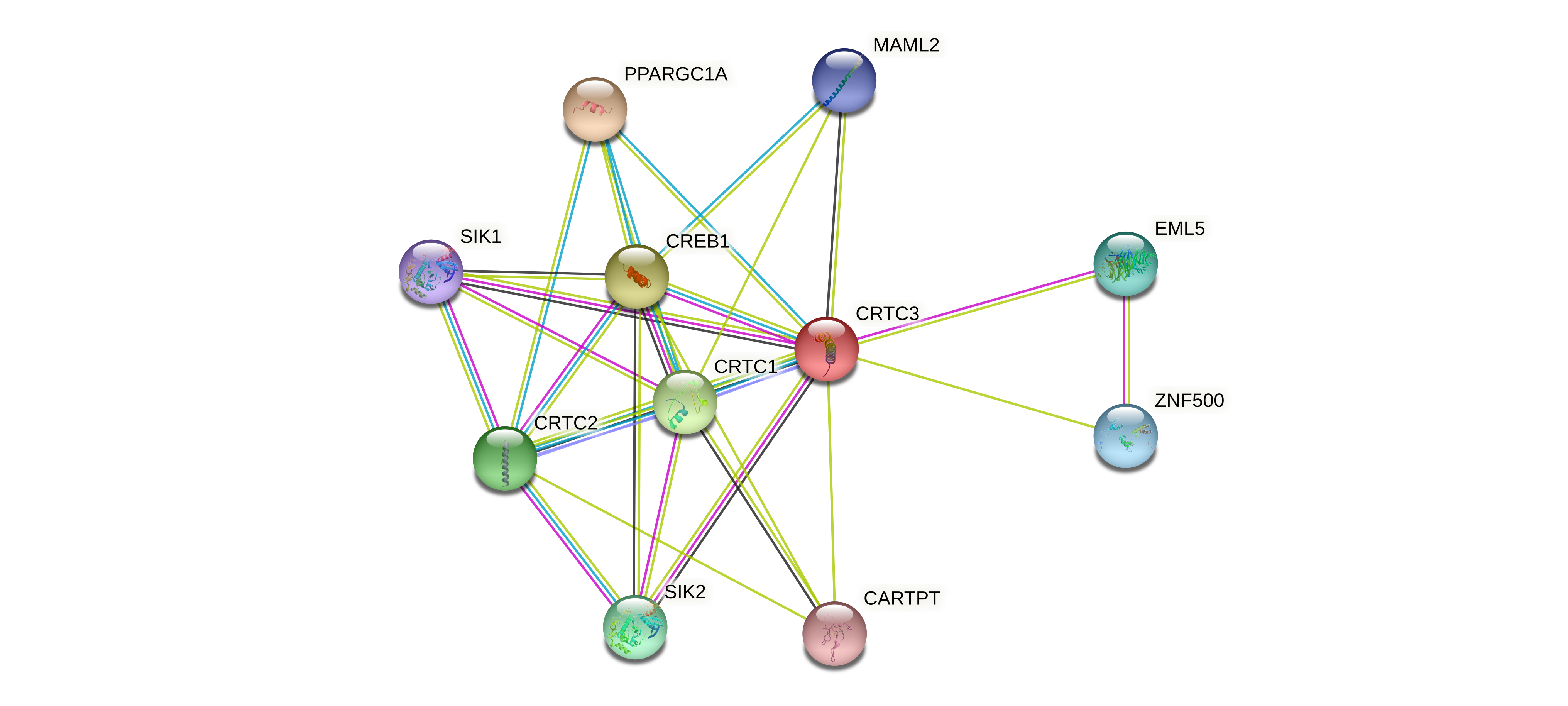| UTHEALTH HOME ABOUT SBMI A-Z WEBMAIL INSIDE THE UNIVERSITY |

|
|||||||
|
Fusion Protein:CRTC3-MESP2 |
Fusion Protein Summary |
 Fusion gene summary Fusion gene summary |
| Fusion partner gene information | Fusion gene name: CRTC3-MESP2 | FusionPDB ID: 19574 | FusionGDB2.0 ID: 19574 | Hgene | Tgene | Gene symbol | CRTC3 | MESP2 | Gene ID | 64784 | 145873 |
| Gene name | CREB regulated transcription coactivator 3 | mesoderm posterior bHLH transcription factor 2 | |
| Synonyms | TORC-3|TORC3 | SCDO2|bHLHc6 | |
| Cytomap | 15q26.1 | 15q26.1 | |
| Type of gene | protein-coding | protein-coding | |
| Description | CREB-regulated transcription coactivator 3transducer of regulated CREB protein 3transducer of regulated cAMP response element-binding protein (CREB) 3 | mesoderm posterior protein 2class C basic helix-loop-helix protein 6mesoderm posterior 2 homologmesoderm posterior basic helix-loop-helix transcription factor 2 | |
| Modification date | 20200313 | 20200313 | |
| UniProtAcc | Q6UUV7 | Q0VG99 | |
| Ensembl transtripts involved in fusion gene | ENST ids | ENST00000268184, ENST00000420329, ENST00000558619, ENST00000560098, | ENST00000341735, ENST00000558723, ENST00000560219, |
| Fusion gene scores for assessment (based on all fusion genes of FusionGDB 2.0) | * DoF score | 7 X 6 X 7=294 | 5 X 4 X 4=80 |
| # samples | 9 | 5 | |
| ** MAII score | log2(9/294*10)=-1.70781924850669 possibly effective Gene in Pan-Cancer Fusion Genes (peGinPCFGs). DoF>8 and MAII<0 | log2(5/80*10)=-0.678071905112638 possibly effective Gene in Pan-Cancer Fusion Genes (peGinPCFGs). DoF>8 and MAII<0 | |
| Context (manual curation of fusion genes in FusionPDB) | PubMed: CRTC3 [Title/Abstract] AND MESP2 [Title/Abstract] AND fusion [Title/Abstract] | ||
| Most frequent breakpoint (based on all fusion genes of FusionGDB 2.0) | CRTC3(91182047)-MESP2(90321296), # samples:3 | ||
| Anticipated loss of major functional domain due to fusion event. | CRTC3-MESP2 seems lost the major protein functional domain in Hgene partner, which is a CGC by not retaining the major functional domain in the partially deleted in-frame ORF. CRTC3-MESP2 seems lost the major protein functional domain in Hgene partner, which is a CGC by not retaining the major functional domain in the partially deleted in-frame ORF. CRTC3-MESP2 seems lost the major protein functional domain in Hgene partner, which is a essential gene by not retaining the major functional domain in the partially deleted in-frame ORF. CRTC3-MESP2 seems lost the major protein functional domain in Hgene partner, which is a essential gene by not retaining the major functional domain in the partially deleted in-frame ORF. | ||
| * DoF score (Degree of Frequency) = # partners X # break points X # cancer types ** MAII score (Major Active Isofusion Index) = log2(# samples/DoF score*10) |
 Gene ontology of each fusion partner gene with evidence of Inferred from Direct Assay (IDA) from Entrez Gene ontology of each fusion partner gene with evidence of Inferred from Direct Assay (IDA) from Entrez |
| Partner | Gene | GO ID | GO term | PubMed ID |
 Fusion gene breakpoints across CRTC3 (5'-gene) Fusion gene breakpoints across CRTC3 (5'-gene)* Click on the image to open the UCSC genome browser with custom track showing this image in a new window. |
 |
 Fusion gene breakpoints across MESP2 (3'-gene) Fusion gene breakpoints across MESP2 (3'-gene)* Click on the image to open the UCSC genome browser with custom track showing this image in a new window. |
 |
Top |
Fusion Gene Sample Information |
 Fusion gene information from FusionGDB2.0. Fusion gene information from FusionGDB2.0. |
 Fusion gene information from two resources (ChiTars 5.0 and ChimerDB 4.0) Fusion gene information from two resources (ChiTars 5.0 and ChimerDB 4.0)* All genome coordinats were lifted-over on hg19. * Click on the break point to see the gene structure around the break point region using the UCSC Genome Browser. |
| Source | Disease | Sample | Hgene | Hchr | Hbp | Hstrand | Tgene | Tchr | Tbp | Tstrand |
| ChimerDB4 | UCS | TCGA-NA-A4R1-01A | CRTC3 | chr15 | 91182047 | - | MESP2 | chr15 | 90321296 | + |
| ChimerDB4 | UCS | TCGA-NA-A4R1-01A | CRTC3 | chr15 | 91182047 | + | MESP2 | chr15 | 90321296 | + |
| ChimerDB4 | UCS | TCGA-NA-A4R1 | CRTC3 | chr15 | 91182047 | + | MESP2 | chr15 | 90321296 | + |
Top |
Fusion ORF Analysis |
 Fusion information from ORFfinder translation from full-length transcript sequence from FusionPDB. Fusion information from ORFfinder translation from full-length transcript sequence from FusionPDB. |
| Henst | Tenst | Hgene | Hchr | Hbp | Hstrand | Tgene | Tchr | Tbp | Tstrand | Seq length (transcript) | BP loci (transcript) | Predicted start (transcript) | Predicted stop (transcript) | Seq length (amino acids) |
| ENST00000420329 | CRTC3 | chr15 | 91182047 | + | ENST00000560219 | MESP2 | chr15 | 90321296 | + | 2382 | 1695 | 147 | 1964 | 605 |
| ENST00000268184 | CRTC3 | chr15 | 91182047 | + | ENST00000560219 | MESP2 | chr15 | 90321296 | + | 2239 | 1552 | 4 | 1821 | 605 |
 DeepORF prediction of the coding potential based on the fusion transcript sequence of in-frame fusion genes. DeepORF is a coding potential classifier based on convolutional neural network by comparing the real Ribo-seq data. If the no-coding score < 0.5 and coding score > 0.5, then the in-frame fusion transcript is predicted as being likely translated. DeepORF prediction of the coding potential based on the fusion transcript sequence of in-frame fusion genes. DeepORF is a coding potential classifier based on convolutional neural network by comparing the real Ribo-seq data. If the no-coding score < 0.5 and coding score > 0.5, then the in-frame fusion transcript is predicted as being likely translated. |
| Henst | Tenst | Hgene | Hchr | Hbp | Hstrand | Tgene | Tchr | Tbp | Tstrand | No-coding score | Coding score |
| ENST00000420329 | ENST00000560219 | CRTC3 | chr15 | 91182047 | + | MESP2 | chr15 | 90321296 | + | 0.061630234 | 0.93836975 |
| ENST00000268184 | ENST00000560219 | CRTC3 | chr15 | 91182047 | + | MESP2 | chr15 | 90321296 | + | 0.06718763 | 0.93281233 |
Top |
Fusion Amino Acid Sequences |
 For individual full-length fusion transcript sequence from FusionPDB, we ran ORFfinder and chose the longest ORF among the all predicted ones. For individual full-length fusion transcript sequence from FusionPDB, we ran ORFfinder and chose the longest ORF among the all predicted ones. |
| >FusionGDB ID_FusionGDB isoform ID_FGname_Hgene_Hchr_Hbp_Henst_Tgene_Tchr_Tbp_Tenst_length(fusion AA) seq_BP >19574_19574_1_CRTC3-MESP2_CRTC3_chr15_91182047_ENST00000268184_MESP2_chr15_90321296_ENST00000560219_length(amino acids)=605AA_BP=509 MAASPGSGSANPRKFSEKIALHTQRQAEETRAFEQLMTDLTLSRVQFQKLQQLRLTQYHGGSLPNVSQLRSSASEFQPSFHQADNVRGTR HHGLVERPSRNRFHPLHRRSGDKPGRQFDGSAFGANYSSQPLDESWPRQQPPWKDEKHPGFRLTSALNRTNSDSALHTSALSTKPQDPYG GGGQSAWPAPYMGFCDGENNGHGEVASFPGPLKEENLLNVPKPLPKQLWETKEIQSLSGRPRSCDVGGGNAFPHNGQNLGLSPFLGTLNT GGSLPDLTNLHYSTPLPASLDTTDHHFGSMSVGNSVNNIPAAMTHLGIRSSSGLQSSRSNPSIQATLNKTVLSSSLNNHPQTSVPNASAL HPSLRLFSLSNPSLSTTNLSGPSRRRQPPVSPLTLSPGPEAHQGFSRQLSSTSPLAPYPTSQMVSSDRSQLSFLPTEAQAQVSPPPPYPA PQELTQPLLQQPRAPEAPAQQPQAASSLPQSDFQLLPAQGSSLTNFFPDVGFDQQSMRPGPAFPQQGLSVSPEPCLSLGAPSLLPHPSCQ -------------------------------------------------------------- >19574_19574_2_CRTC3-MESP2_CRTC3_chr15_91182047_ENST00000420329_MESP2_chr15_90321296_ENST00000560219_length(amino acids)=605AA_BP=509 MAASPGSGSANPRKFSEKIALHTQRQAEETRAFEQLMTDLTLSRVQFQKLQQLRLTQYHGGSLPNVSQLRSSASEFQPSFHQADNVRGTR HHGLVERPSRNRFHPLHRRSGDKPGRQFDGSAFGANYSSQPLDESWPRQQPPWKDEKHPGFRLTSALNRTNSDSALHTSALSTKPQDPYG GGGQSAWPAPYMGFCDGENNGHGEVASFPGPLKEENLLNVPKPLPKQLWETKEIQSLSGRPRSCDVGGGNAFPHNGQNLGLSPFLGTLNT GGSLPDLTNLHYSTPLPASLDTTDHHFGSMSVGNSVNNIPAAMTHLGIRSSSGLQSSRSNPSIQATLNKTVLSSSLNNHPQTSVPNASAL HPSLRLFSLSNPSLSTTNLSGPSRRRQPPVSPLTLSPGPEAHQGFSRQLSSTSPLAPYPTSQMVSSDRSQLSFLPTEAQAQVSPPPPYPA PQELTQPLLQQPRAPEAPAQQPQAASSLPQSDFQLLPAQGSSLTNFFPDVGFDQQSMRPGPAFPQQGLSVSPEPCLSLGAPSLLPHPSCQ -------------------------------------------------------------- |
Top |
Fusion Protein Functional Features |
 Four levels of functional features of fusion genes Four levels of functional features of fusion genesGo to FGviewer search page for the most frequent breakpoint (https://ccsmweb.uth.edu/FGviewer/chr15:91182047/chr15:90321296) - FGviewer provides the online visualization of the retention search of the protein functional features across DNA, RNA, protein, and pathological levels. - How to search 1. Put your fusion gene symbol. 2. Press the tab key until there will be shown the breakpoint information filled. 4. Go down and press 'Search' tab twice. 4. Go down to have the hyperlink of the search result. 5. Click the hyperlink. 6. See the FGviewer result for your fusion gene. |
 |
 Main function of each fusion partner protein. (from UniProt) Main function of each fusion partner protein. (from UniProt) |
| Hgene | Tgene |
| CRTC3 | MESP2 |
| FUNCTION: Transcriptional coactivator for CREB1 which activates transcription through both consensus and variant cAMP response element (CRE) sites. Acts as a coactivator, in the SIK/TORC signaling pathway, being active when dephosphorylated and acts independently of CREB1 'Ser-133' phosphorylation. Enhances the interaction of CREB1 with TAF4. Regulates the expression of specific CREB-activated genes such as the steroidogenic gene, StAR. Potent coactivator of PPARGC1A and inducer of mitochondrial biogenesis in muscle cells. Also coactivator for TAX activation of the human T-cell leukemia virus type 1 (HTLV-1) long terminal repeats (LTR). {ECO:0000269|PubMed:14506290, ECO:0000269|PubMed:15454081, ECO:0000269|PubMed:15466468, ECO:0000269|PubMed:16817901, ECO:0000269|PubMed:16980408, ECO:0000269|PubMed:17210223, ECO:0000269|PubMed:17644518}. | FUNCTION: Transcription factor with important role in somitogenesis. Defines the rostrocaudal patterning of the somite by participating in distinct Notch pathways. Regulates also the FGF signaling pathway. Specifies the rostral half of the somites. Generates rostro-caudal polarity of somites by down-regulating in the presumptive rostral domain DLL1, a Notch ligand. Participates in the segment border formation by activating in the anterior presomitic mesoderm LFNG, a negative regulator of DLL1-Notch signaling. Acts as a strong suppressor of Notch activity. Together with MESP1 is involved in the epithelialization of somitic mesoderm and in the development of cardiac mesoderm. |
 Retention analysis result of each fusion partner protein across 39 protein features of UniProt such as six molecule processing features, 13 region features, four site features, six amino acid modification features, two natural variation features, five experimental info features, and 3 secondary structure features. Here, because of limited space for viewing, we only show the protein feature retention information belong to the 13 regional features. All retention annotation result can be downloaded at * Minus value of BPloci means that the break pointn is located before the CDS. Retention analysis result of each fusion partner protein across 39 protein features of UniProt such as six molecule processing features, 13 region features, four site features, six amino acid modification features, two natural variation features, five experimental info features, and 3 secondary structure features. Here, because of limited space for viewing, we only show the protein feature retention information belong to the 13 regional features. All retention annotation result can be downloaded at * Minus value of BPloci means that the break pointn is located before the CDS. |
| - Retained protein feature among the 13 regional features. |
| Partner | Gene | Hbp | Tbp | ENST | Strand | BPexon | TotalExon | Protein feature loci | *BPloci | TotalLen | Protein feature | Protein feature note |
| Hgene | CRTC3 | chr15:91182047 | chr15:90321296 | ENST00000268184 | + | 13 | 15 | 180_183 | 516.0 | 620.0 | Compositional bias | Note=Poly-Gly |
| Hgene | CRTC3 | chr15:91182047 | chr15:90321296 | ENST00000268184 | + | 13 | 15 | 444_451 | 516.0 | 620.0 | Compositional bias | Note=Poly-Pro |
| Hgene | CRTC3 | chr15:91182047 | chr15:90321296 | ENST00000420329 | + | 13 | 15 | 180_183 | 516.0 | 619.0 | Compositional bias | Note=Poly-Gly |
| Hgene | CRTC3 | chr15:91182047 | chr15:90321296 | ENST00000420329 | + | 13 | 15 | 444_451 | 516.0 | 619.0 | Compositional bias | Note=Poly-Pro |
| - Not-retained protein feature among the 13 regional features. |
| Partner | Gene | Hbp | Tbp | ENST | Strand | BPexon | TotalExon | Protein feature loci | *BPloci | TotalLen | Protein feature | Protein feature note |
| Tgene | MESP2 | chr15:91182047 | chr15:90321296 | ENST00000341735 | 0 | 2 | 81_135 | 308.0 | 398.0 | Domain | bHLH | |
| Tgene | MESP2 | chr15:91182047 | chr15:90321296 | ENST00000341735 | 0 | 2 | 179_204 | 308.0 | 398.0 | Region | Note=13 X 2 AA tandem repeats of G-Q | |
| Tgene | MESP2 | chr15:91182047 | chr15:90321296 | ENST00000341735 | 0 | 2 | 179_180 | 308.0 | 398.0 | Repeat | Note=1 | |
| Tgene | MESP2 | chr15:91182047 | chr15:90321296 | ENST00000341735 | 0 | 2 | 181_182 | 308.0 | 398.0 | Repeat | Note=2 | |
| Tgene | MESP2 | chr15:91182047 | chr15:90321296 | ENST00000341735 | 0 | 2 | 183_184 | 308.0 | 398.0 | Repeat | Note=3 | |
| Tgene | MESP2 | chr15:91182047 | chr15:90321296 | ENST00000341735 | 0 | 2 | 185_186 | 308.0 | 398.0 | Repeat | Note=4 | |
| Tgene | MESP2 | chr15:91182047 | chr15:90321296 | ENST00000341735 | 0 | 2 | 187_188 | 308.0 | 398.0 | Repeat | Note=5 | |
| Tgene | MESP2 | chr15:91182047 | chr15:90321296 | ENST00000341735 | 0 | 2 | 189_190 | 308.0 | 398.0 | Repeat | Note=6 | |
| Tgene | MESP2 | chr15:91182047 | chr15:90321296 | ENST00000341735 | 0 | 2 | 191_192 | 308.0 | 398.0 | Repeat | Note=7 | |
| Tgene | MESP2 | chr15:91182047 | chr15:90321296 | ENST00000341735 | 0 | 2 | 193_194 | 308.0 | 398.0 | Repeat | Note=8 | |
| Tgene | MESP2 | chr15:91182047 | chr15:90321296 | ENST00000341735 | 0 | 2 | 195_196 | 308.0 | 398.0 | Repeat | Note=9 | |
| Tgene | MESP2 | chr15:91182047 | chr15:90321296 | ENST00000341735 | 0 | 2 | 197_198 | 308.0 | 398.0 | Repeat | Note=10 | |
| Tgene | MESP2 | chr15:91182047 | chr15:90321296 | ENST00000341735 | 0 | 2 | 199_200 | 308.0 | 398.0 | Repeat | Note=11 | |
| Tgene | MESP2 | chr15:91182047 | chr15:90321296 | ENST00000341735 | 0 | 2 | 201_202 | 308.0 | 398.0 | Repeat | Note=12 | |
| Tgene | MESP2 | chr15:91182047 | chr15:90321296 | ENST00000341735 | 0 | 2 | 203_204 | 308.0 | 398.0 | Repeat | Note=13 |
Top |
Fusion Protein Structures |
 PDB and CIF files of the predicted fusion proteins PDB and CIF files of the predicted fusion proteins * Here we show the 3D structure of the fusion proteins using Mol*. AlphaFold produces a per-residue confidence score (pLDDT) between 0 and 100. Model confidence is shown from the pLDDT values per residue. pLDDT corresponds to the model’s prediction of its score on the local Distance Difference Test. It is a measure of local accuracy (from AlphfaFold website). To color code individual residues, we transformed individual PDB files into CIF format. |
| Fusion protein PDB link (fusion AA seq ID in FusionPDB) | Hgene | Hchr | Hbp | Hstrand | Tgene | Tchr | Tbp | Tstrand | AA seq | Len(AA seq) |
| PDB file >>>1280_CRTC3_91182047_MESP2_90321296_1280_CRTC3_91182047_MESP2_90321296_ranked_0.pdb | CRTC3 | 91182047 | 91182047 | ENST00000560219 | MESP2 | chr15 | 90321296 | + | MAASPGSGSANPRKFSEKIALHTQRQAEETRAFEQLMTDLTLSRVQFQKLQQLRLTQYHGGSLPNVSQLRSSASEFQPSFHQADNVRGTR HHGLVERPSRNRFHPLHRRSGDKPGRQFDGSAFGANYSSQPLDESWPRQQPPWKDEKHPGFRLTSALNRTNSDSALHTSALSTKPQDPYG GGGQSAWPAPYMGFCDGENNGHGEVASFPGPLKEENLLNVPKPLPKQLWETKEIQSLSGRPRSCDVGGGNAFPHNGQNLGLSPFLGTLNT GGSLPDLTNLHYSTPLPASLDTTDHHFGSMSVGNSVNNIPAAMTHLGIRSSSGLQSSRSNPSIQATLNKTVLSSSLNNHPQTSVPNASAL HPSLRLFSLSNPSLSTTNLSGPSRRRQPPVSPLTLSPGPEAHQGFSRQLSSTSPLAPYPTSQMVSSDRSQLSFLPTEAQAQVSPPPPYPA PQELTQPLLQQPRAPEAPAQQPQAASSLPQSDFQLLPAQGSSLTNFFPDVGFDQQSMRPGPAFPQQGLSVSPEPCLSLGAPSLLPHPSCQ | 605 |
Top |
pLDDT score distribution |
 pLDDT score distribution of the predicted wild-type structures of two partner proteins from AlphaFold2 pLDDT score distribution of the predicted wild-type structures of two partner proteins from AlphaFold2* AlphaFold produces a per-residue confidence score (pLDDT) between 0 and 100. |
CRTC3_pLDDT.png |
MESP2_pLDDT.png |
 pLDDT score distribution of the predicted fusion protein structures from AlphaFold2 pLDDT score distribution of the predicted fusion protein structures from AlphaFold2* AlphaFold produces a per-residue confidence score (pLDDT) between 0 and 100. |
 |
Top |
Ramachandran Plot of Fusion Protein Structure |
 Ramachandran plot of the torsional angles - phi (φ)and psi (ψ) - of the residues (amino acids) contained in this fusion protein peptide. Ramachandran plot of the torsional angles - phi (φ)and psi (ψ) - of the residues (amino acids) contained in this fusion protein peptide. |
| Fusion AA seq ID in FusionPDB and their Ramachandran plots |
Top |
Fusion Protein-Protein Interaction |
 Go to ChiPPI (Chimeric Protein-Protein interactions) to see the chimeric PPI interaction in Go to ChiPPI (Chimeric Protein-Protein interactions) to see the chimeric PPI interaction in |
 Protein-protein interactors with each fusion partner protein in wild-type from validated records (BIOGRID-3.4.160) Protein-protein interactors with each fusion partner protein in wild-type from validated records (BIOGRID-3.4.160) |
| Gene | PPI interactors |
| CRTC3 | YWHAG, YWHAB, SCYL1, NEDD1, MAGEA10, EWSR1, CENPJ, XPO1, CLTC, HCCS, HSPA5, POLD1, MAPK8, LRP8, GTSE1, PCDHB15, CFAP97, Chmp4b, Sec24c, MCM2, DCAF7, KCTD3, KIF13B, CGN, ZBTB21, KSR1, CBY1, Stat3, MDM2, TRIM25, EGLN3, KLHL12, NEDD4L, SIK2, HDAC2, nsp12, CA13, PLEKHA4, KIF14, nsp12ab, INS, DDX58, KIAA1549, LRRC73, YWHAH, S100A2, YWHAQ, S100P, |
 Protein-protein interactors based on sequence similarity (STRING) Protein-protein interactors based on sequence similarity (STRING) |
| Gene | STRING network |
| CRTC3 |  |
| MESP2 |
 - Retained interactions in fusion protein (protein functional feature from UniProt). - Retained interactions in fusion protein (protein functional feature from UniProt). |
| Partner | Gene | Hbp | Tbp | ENST | Strand | BPexon | TotalExon | Protein feature loci | *BPloci | TotalLen | Still interaction with |
 - Lost interactions due to fusion (protein functional feature from UniProt). - Lost interactions due to fusion (protein functional feature from UniProt). |
| Partner | Gene | Hbp | Tbp | ENST | Strand | BPexon | TotalExon | Protein feature loci | *BPloci | TotalLen | Interaction lost with |
Top |
Related Drugs to CRTC3-MESP2 |
 Drugs used for this fusion-positive patient. Drugs used for this fusion-positive patient. (Manual curation of PubMed, 04-30-2022 + MyCancerGenome) |
| Hgene | Tgene | Drug | Source | PMID |
Top |
Related Diseases to CRTC3-MESP2 |
 Diseases that have this fusion gene. Diseases that have this fusion gene. (Manual curation of PubMed, 04-30-2022 + MyCancerGenome) |
| Hgene | Tgene | Disease | Source | PMID |
 Diseases associated with fusion partners. Diseases associated with fusion partners. (DisGeNet 4.0) |
| Partner | Gene | Disease ID | Disease name | # pubmeds | Source |

